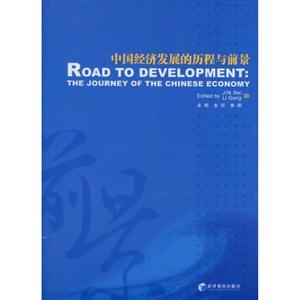中國(guó)經(jīng)濟(jì)發(fā)展的歷程與前景
-
>
(精)東北革命和抗日根據(jù)地貨幣研究
-
>
近代天津工業(yè)與企業(yè)制度
-
>
眉山金融論劍
-
>
圖解資本論
-
>
金融煉金術(shù)(專業(yè)珍藏版)2021專業(yè)審訂
-
>
認(rèn)知世界的經(jīng)濟(jì)學(xué)
-
>
全球貨幣進(jìn)化史
中國(guó)經(jīng)濟(jì)發(fā)展的歷程與前景 版權(quán)信息
- ISBN:9787509610091
- 條形碼:9787509610091 ; 978-7-5096-1009-1
- 裝幀:暫無(wú)
- 冊(cè)數(shù):暫無(wú)
- 重量:暫無(wú)
- 所屬分類:>>
中國(guó)經(jīng)濟(jì)發(fā)展的歷程與前景 本書特色
《中國(guó)經(jīng)濟(jì)發(fā)展的歷程與前景》是由經(jīng)濟(jì)管理出版社出版的。
中國(guó)經(jīng)濟(jì)發(fā)展的歷程與前景 目錄
中國(guó)經(jīng)濟(jì)發(fā)展的歷程與前景 節(jié)選
《中國(guó)經(jīng)濟(jì)發(fā)展的歷程與前景》匯集了中國(guó)頂級(jí)經(jīng)濟(jì)學(xué)家近年來(lái)對(duì)中國(guó)經(jīng)濟(jì)問(wèn)題的重要研究成果和主要觀點(diǎn),從多角度透視了中國(guó)經(jīng)濟(jì)的現(xiàn)狀與發(fā)展趨勢(shì),共包括六部分內(nèi)容:改革與開(kāi)放,增長(zhǎng)與結(jié)構(gòu),工業(yè)與農(nóng)業(yè),金融與財(cái)政,企業(yè)與勞動(dòng),資源與環(huán)境。
中國(guó)經(jīng)濟(jì)發(fā)展的歷程與前景 相關(guān)資料
插圖:3. Contribution to technical progressThrough foreign trade, China has brought in large quantities of advanced technology and equipment. Most foreign investment goes to capital and technology intensive industries like the manufacturing of telecommunication equipment, computers, transport equipment, electric machinery and apparatus. All such investment contributes to the upgrading of industries and exporting. In 2007, foreign-funded enterprises accounted for 64.3% of output of China's high-tecti industries. Of China's total exports in 2007, the share of electromechanical and high-tech products was 57.6% and 28.6% respectively, and those made by foreign-funded firms accounted for 73% and 87% respectively. Currently, foreign investors have set up more than 1,100 R&D centers in China. In tandem with opening-up, "Made-in-China" increasingly represents better quality and higher know how.4. Contribution to sustainable developmentImporting serves as a major channel in easing the pressure of limited per-capita resources in China. In 2007, the net import of primary goods reached US $181.4 billion, which greatly eased resource shortages, supported rapid economic growth and met social needs. The importing of resource-intensive goods like agricultural products can be regarded as the import of non-tradable scarce resources of land and freshwater. According to a UNFAO estimate, the amount of freshwater indirectly imported through agricultural trade is equivalent to 13% of water consumption for global grain production. Freshwater imported by Japan in the form of agricultural trade surpasses its domestic irrigation water consumption. According to research by Chinese experts, China imported 31.5 million tons of soybeans in 2006, which otherwise would take 18.1 million hectares (five times the soybean planting area of Heilongjiang province) to grow domestically. The arable land resources that are saved can grow other sorts of crops (Chang Qing, Wang Jun, 2007). The constraining of China's factor endowment has been alleviated through exporting labor intensive goods and importing resource intensive goods.
- >
小考拉的故事-套裝共3冊(cè)
- >
月亮與六便士
- >
朝聞道
- >
自卑與超越
- >
人文閱讀與收藏·良友文學(xué)叢書:一天的工作
- >
二體千字文
- >
上帝之肋:男人的真實(shí)旅程
- >
苦雨齋序跋文-周作人自編集



















